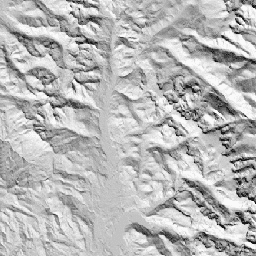Page Summary
-
CHILI is an index derived from the 30m SRTM DEM that serves as a surrogate for the effects of insolation and topographic shading on evapotranspiration.
-
This dataset is part of the Conservation Science Partners (CSP) Ecologically Relevant Geomorphology (ERGo) Datasets, intended for climate adaptation planning.
-
The dataset provides a global SRTM-derived CHILI index with a pixel size of 90 meters.

- Dataset Availability
- 2006-01-24T00:00:00Z–2011-05-13T00:00:00Z
- Dataset Provider
- Conservation Science Partners
- Tags
Description
CHILI is a surrogate for effects of insolation and topographic shading on evapotranspiration represented by calculating insolation at early afternoon, sun altitude equivalent to equinox. It is based on the 30m SRTM DEM (available in EE as USGS/SRTMGL1_003).
The Conservation Science Partners (CSP) Ecologically Relevant Geomorphology (ERGo) Datasets, Landforms and Physiography contain detailed, multi-scale data on landforms and physiographic (aka land facet) patterns. Although there are many potential uses of these data, the original purpose for these data was to develop an ecologically relevant classification and map of landforms and physiographic classes that are suitable for climate adaptation planning. Because there is large uncertainty associated with future climate conditions and even more uncertainty around ecological responses, providing information about what is unlikely to change offers a strong foundation for managers to build robust climate adaptation plans. The quantification of these features of the landscape is sensitive to the resolution, so we provide the highest resolution possible given the extent and characteristics of a given index.
Bands
Pixel Size
90 meters
Bands
| Name | Min | Max | Pixel Size | Description |
|---|---|---|---|---|
constant |
0 | 255 | meters | SRTM-derived CHILI index ranging from 0 (very cool) to 255 (very warm). This was rescaled from the [0,1] range in the publication. |
Terms of Use
Terms of Use
Citations
Theobald, D. M., Harrison-Atlas, D., Monahan, W. B., & Albano, C. M. (2015). Ecologically-relevant maps of landforms and physiographic diversity for climate adaptation planning. PloS one, 10(12), e0143619
Explore with Earth Engine
Code Editor (JavaScript)
var dataset = ee.Image('CSP/ERGo/1_0/Global/SRTM_CHILI'); var srtmChili = dataset.select('constant'); var srtmChiliVis = { min: 0.0, max: 255.0, }; Map.setCenter(-105.8636, 40.3439, 11); Map.addLayer(srtmChili, srtmChiliVis, 'SRTM CHILI');